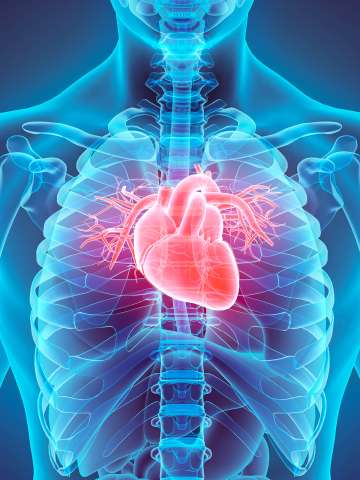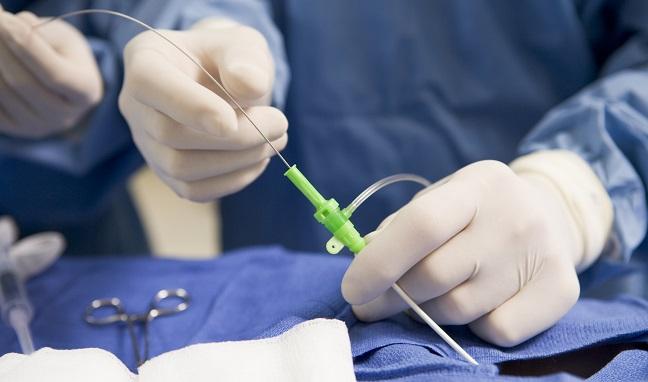Where can I find the best Cardiologist near me for ongoing care?
Where can I find the best Cardiologist near me for ongoing care?
Blog Article
Comprehending the Value of Cardiology in Modern Medical Care Services
Cardiology plays a crucial function in contemporary health care, specifically as heart problem proceeds to be the leading source of death worldwide. Developments in diagnostics and therapy have actually changed person treatment, making it possible for earlier treatments and boosted end results. The change towards precautionary cardiology equips individuals to manage their health proactively. As modern technology proceeds to advance, the assimilation of cutting-edge services may further redefine cardiology's effect on public health, triggering a more detailed exam of arising patterns and their ramifications.
The Prevalence of Heart Disease and Its Impact on Public Wellness
Although heart problem stays the leading cause of death around the world, its influence prolongs much beyond individual people to impact public health systems and economies. The high occurrence of heart disease positions a considerable strain on health care resources, demanding enhanced financing for avoidance, rehabilitation, and therapy programs. Public health and wellness campaigns should resolve risk aspects such as obesity, cigarette smoking, and sedentary way of lives, which add greatly to the increasing occurrence of heart conditions.Moreover, the economic problem related to heart illness is enormous, incorporating not only direct clinical costs but likewise indirect expenditures related to lost efficiency and early death. Communities deal with obstacles in taking care of these prices, frequently causing differences in healthcare gain access to and results. As the populace ages and lifestyle-related threats remain to escalate, the urgency for efficient cardiology treatments comes to be extremely important. Consequently, dealing with heart illness is not just an issue of specific wellness yet additionally a critical public health priority.
Developments in Heart Diagnostics and Imaging Techniques
Current improvements in heart diagnostics and imaging strategies have changed the field of cardiology, improving the capability to find and keep track of cardiovascular disease. Techniques such as heart MRI, CT angiography, and echocardiography have come to be increasingly innovative, providing detailed photos of cardiac structures and features. These methods permit the early identification of problems like coronary artery disease, heart failure, and valvular disorders.Moreover, innovations in non-invasive diagnostics, such as wearable technology and remote tracking devices, have empowered individuals and health care companies. These tools facilitate real-time tracking of heart rhythms and other vital signs, bring about timely treatments. Furthermore, artificial intelligence is being incorporated right into imaging evaluation, enhancing accuracy and effectiveness in medical diagnosis.
Developments in Treatment Options for Heart Issues
Current innovations in cardiology have brought about substantial technologies in treatment alternatives for heart disease. These consist of innovative surgical techniques that enhance step-by-step end results and emerging drugs that offer brand-new methods for therapy. As the area develops, these technologies play a crucial role in boosting patient treatment and results.
Advanced Surgical Techniques
Developments in surgical strategies have changed the landscape of cardiology, providing brand-new hope for individuals with heart disease. Minimally intrusive procedures, such as catheter-based treatments, have significantly reduced recovery times and health center keeps. Methods like robotic-assisted surgical treatment boost precision, allowing doctors to browse complex physiological frameworks with better accuracy. Furthermore, developments in imaging innovation help with real-time visualization throughout procedures, improving end results. Transcatheter aortic shutoff substitute (TAVR) exhibits an innovation in dealing with aortic constriction, enabling shutoff replacement without open-heart surgery. Furthermore, hybrid techniques that integrate medical and catheter-based methods supply tailored services for different heart issues. These sophisticated medical methods not just improve patient safety but additionally increase therapy choices, highlighting the crucial role of technology in modern-day cardiology methods.
Arising Drugs and Treatments
As the landscape of cardiology proceeds to develop, arising drugs and treatments play an essential function in enhancing therapy choices for heart conditions. Developments such as novel anticoagulants and advanced lipid-lowering representatives have transformed the management of cardio conditions, considerably reducing person morbidity and death. Additionally, the growth of gene treatments and regenerative medication uses promising methods for treating problems previously considered irreparable. Scientific trials are continuously revealing the efficiency of these therapies, pushing the borders of conventional treatments. The combination of electronic wellness technologies assists in personalized medicine, enabling for customized therapy plans based on genetic and way of life variables. Jointly, these developments highlight the vibrant nature of cardiology, boosting patient outcomes and redefining requirements of treatment in modern-day medical care.
The Duty of Preventive Cardiology in Patient Care
Precautionary cardiology plays a crucial duty in patient care by concentrating on the identification of risk elements that add to cardiovascular disease. Via way of living alteration approaches and very early discovery strategies, medical care service providers can efficiently decrease the incidence of cardiovascular events - Cardiology. This positive technique not only enhances individual end results yet also promotes long-term wellness
Threat Variable Recognition
While cardio illness remain a leading cause of morbidity and death worldwide, reliable danger element identification acts as a keystone of preventative cardiology. Determining risk factors such as high blood pressure, diabetic issues, family, and hyperlipidemia background is vital for early treatment. Health care professionals make use of various evaluating techniques to evaluate these variables, enabling customized precautionary measures. In addition, comprehending a patient's way of life options, such as smoking and physical lack of exercise, further educates risk evaluations. This comprehensive analysis allows medical professionals to develop tailored care strategies focused on mitigating threats. By focusing on risk aspect recognition, healthcare systems can boost patient results and lower the overall problem of cardio diseases, eventually adding to improved public health and wellness approaches and resource allotment.
Way Of Living Alteration Techniques
A wide variety of researches highlights the vital duty of way of living modification techniques in minimizing heart disease risk. These techniques include nutritional adjustments, raised physical activity, smoking cessation, and weight administration. By embracing a heart-healthy diet regimen abundant in fruits, veggies, entire grains, and lean healthy proteins, people can decrease cholesterol degrees and blood stress. Normal exercise strengthens the heart and improves overall cardiovascular health. Additionally, quitting smoking significantly decreases the danger of cardiovascular disease and improves recovery rates for those with status quo. Weight monitoring better adds to cardio health and wellness by alleviating other threat aspects such as diabetic issues and hypertension. Carrying out these lifestyle alters not only promotes individual well-being yet additionally functions as a foundation of preventive cardiology in patient treatment.
Very Early Detection Techniques
Lifestyle alterations considerably add to reducing cardio condition dangers, but they are most reliable when coupled with early discovery methods. Preventive cardiology emphasizes the relevance of determining potential heart concerns before they rise into serious problems. Techniques such as blood stress tracking, cholesterol screening, and progressed imaging technologies like echocardiograms play crucial functions in evaluating cardio health. Biomarkers and hereditary testing additionally enhance the accuracy of early discovery, allowing for tailored preventative techniques. Routine heart danger analyses equip doctor to step in proactively, potentially preventing heart assaults and strokes (Cardiology Jupiter). By incorporating these very early detection techniques right into routine treatment, people can take advantage of timely way of living interventions and targeted treatments, inevitably improving outcomes and improving lifestyle
Integrating Modern Technology Into Cardiology Practices
As developments in innovation proceed to reshape various fields, the combination of cutting-edge devices and systems into cardiology practices Read More Here has ended up being crucial for enhancing client care and results. Telemedicine systems allow cardiologists to check patients remotely, improving access to care while decreasing the problem on medical care centers. Wearable tools, such as smartwatches, make it possible for continual heart price surveillance, alerting both physicians and patients to potential issues in real-time. Additionally, synthetic intelligence (AI) is being utilized to evaluate large amounts of cardiac data, assisting in very early medical diagnosis and individualized see this here therapy strategies. Advanced imaging techniques, including 3D echocardiography, enhance visualization of heart structures, bring about much more exact interventions. Electronic health documents (EHRs) simplify person info administration, guaranteeing that cardiologists have immediate accessibility to critical information. Together, these technological innovations are changing cardiology, promoting proactive monitoring and enhanced health and wellness results for patients with cardio conditions.
The Significance of Patient Education And Learning and Engagement
Individual education and interaction play a pivotal function in the management of cardio health. By furnishing patients with understanding concerning their conditions, therapy options, and way of life changes, doctor empower people to take an energetic role in their care. This aggressive approach can cause boosted adherence to prescribed medicines, nutritional adjustments, and exercise programs, inevitably minimizing the threat of complications.Engagement also promotes a solid patient-provider partnership, encouraging open communication and depend on. When individuals really feel informed and involved, they are much more most likely to voice problems and ask inquiries, which can lead to better scientific results. In addition, instructional sources, such as workshops or electronic systems, can enhance understanding and promote self-management strategies. In general, prioritizing client education and Related Site interaction is necessary for boosting cardio wellness, boosting top quality of life, and lowering medical care prices connected with heart diseases.
Future Patterns in Cardiology and Their Prospective Effect

Regularly Asked Inquiries
What Way Of Life Modifications Can Decrease Heart Problem Threat?
The existing concern addresses way of life changes that can greatly lower heart problem danger. Cardiology care. Adopting a well balanced diet regimen, taking part in regular exercise, preserving a healthy weight, taking care of anxiety, and staying clear of cigarette can especially improve cardio health and wellness
How Can I Identify Early Signs of Heart Issues?
Recognizing very early indications of heart troubles includes monitoring signs such as chest discomfort, shortness of breath, tiredness, and irregular heart beat. Prompt understanding of these indicators can trigger necessary medical evaluation and intervention for far better results.
What Are the Distinctions Between Cardiologists and Heart Surgeons?
The differences between cardiologists and heart cosmetic surgeons exist in their roles; cardiologists mostly diagnose and handle heart problems through non-invasive techniques, while heart surgeons do surgeries to remedy architectural heart issues. Each plays a crucial, distinctive role.

Exactly how Frequently Should I Get My Heart Health Checked?
The regularity of heart medical examination varies based on specific threat aspects. Typically, adults need to go through assessments every one to 2 years, while those with current conditions might require even more frequent evaluations as advised by healthcare experts.
What Duty Does Genes Play in Cardiovascular Disease Risk?
Genes greatly affects heart illness threat, with familial patterns showing inherited conditions. Certain genetics can incline individuals to high blood pressure, cholesterol issues, and various other cardio issues, highlighting the importance of hereditary testing in assessing heart health. Heart illness remains the leading reason of death around the world, its effect expands far past individual people to affect public wellness systems and economies. Public wellness initiatives need to address danger variables such as weight problems, smoking cigarettes, and sedentary way of livings, which add significantly to the climbing incidence of heart conditions.Moreover, the economic problem associated with heart illness is enormous, incorporating not only direct clinical prices but likewise indirect expenditures connected to lost efficiency and early death. Preventative cardiology plays a vital duty in patient care by focusing on the identification of danger variables that add to heart disease. Synthetic intelligence (AI) and maker understanding are enhancing diagnostics and client tracking, allowing very early discovery of heart illness. The distinctions in between cardiologists and heart doctors exist in their duties; cardiologists primarily diagnose and manage heart conditions through non-invasive methods, while heart cosmetic surgeons carry out surgical procedures to correct structural heart issues.
Report this page